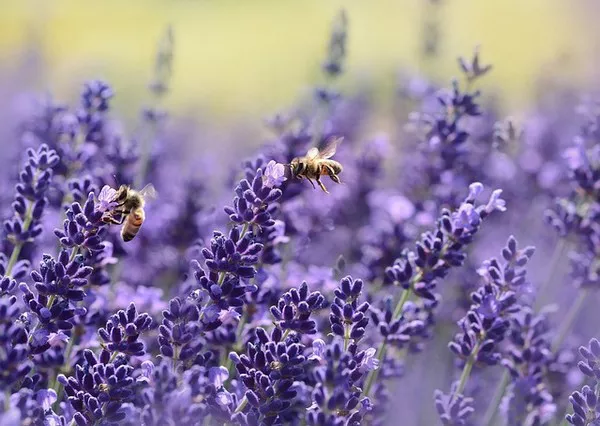Lavender (Lavandula) is a timeless and versatile herb that has been cherished for centuries, not only for its aromatic and medicinal qualities but also for its striking appearance. Whether you’re a seasoned gardener or a novice, growing lavender can be a rewarding and enjoyable experience. This article will provide a comprehensive guide on how to grow lavender plants successfully, covering everything from selecting the right lavender varieties to caring for these fragrant beauties.
Selecting the Right Lavender Varieties
Before embarking on your lavender-growing journey, it’s essential to choose the right lavender variety for your region and intended use. There are many lavender cultivars available, each with its unique characteristics, including size, flower color, and fragrance. Here are some popular lavender varieties:
English Lavender (Lavandula angustifolia): Known for its sweet fragrance and compact growth, English lavender is a classic choice for both ornamental and culinary purposes. Varieties like ‘Munstead’ and ‘Hidcote’ are excellent selections.
French Lavender (Lavandula stoechas): French lavender, with its distinctive butterfly-like blooms and strong fragrance, is a great option for Mediterranean climates. ‘Anouk’ and ‘Silver Anouk’ are well-loved varieties.
Spanish Lavender (Lavandula stoechas subsp. pedunculata): Spanish lavender is recognized by its large, pineapple-shaped flower heads. It thrives in warmer regions and adds a pop of color to your garden.
Lavandin (Lavandula x intermedia): Lavandin is a hybrid of English and spike lavender, prized for its high oil content. While it’s not as visually appealing as other varieties, it’s ideal for essential oil production. ‘Grosso’ and ‘Provence’ are popular choices.
Lavender for Crafts (Lavandula dentata and Lavandula latifolia): These lavender varieties have long stems and are perfect for crafting projects like wreaths and dried flower arrangements.
Lavender for Hedges (Lavandula x chaytorae): If you’re looking to create a lavender hedge, consider varieties like ‘Hidcote Giant’ or ‘Grosso.’
Lavender for Potpourri (Lavandula x allardii): These varieties, such as ‘Silver Frost’ and ‘Seal,’ have a strong fragrance and are ideal for making potpourri.
Choosing the Right Location
Lavender thrives in well-drained soil and requires plenty of sunlight. To ensure your lavender plants flourish, consider the following factors when selecting a location:
Sunlight: Lavender loves full sun. Choose a spot in your garden that receives at least 6-8 hours of direct sunlight daily.
Soil: Lavender prefers well-drained soil with a pH level between 6.4 and 8.3. If your soil is heavy or clayey, consider amending it with sand or organic matter to improve drainage.
Air Circulation: Good air circulation helps prevent disease and keeps the plants healthy. Avoid planting lavender in tight, overcrowded spaces.
Planting Lavender
Planting lavender correctly is crucial for its long-term health and vitality. Follow these steps for successful planting:
Timing: The best time to plant lavender is in the spring or fall when the soil is not too wet or frozen.
Spacing: Depending on the variety, space your lavender plants 12-24 inches apart to allow for proper air circulation and future growth.
Soil Preparation: Lavender thrives in well-drained soil. Prepare the soil by incorporating sand or grit to improve drainage. Ensure the planting hole is twice as wide as the root ball and just as deep.
Watering: Water your lavender thoroughly immediately after planting. After that, water sparingly. Lavender prefers to dry out between watering, as overly wet soil can lead to root rot.
Caring for Your Lavender Plants
Lavender is a relatively low-maintenance plant, but it does require some care to ensure healthy growth and abundant blooms. Here are essential care tips:
Pruning: Pruning is crucial for maintaining the shape and vigor of your lavender plants. After the first bloom, trim the spent flower stems to encourage repeat blooming and prevent woody growth. Additionally, prune your lavender in the early spring to remove dead or damaged branches.
Mulching: Applying a layer of mulch around your lavender plants can help regulate soil temperature, conserve moisture, and deter weeds. Use gravel or a light mulch like straw or pine needles, keeping it away from the plant’s base.
Fertilizing: Lavender is not a heavy feeder. A light application of a balanced, slow-release fertilizer in the spring is typically sufficient. Avoid over-fertilizing, as this can lead to excessive leaf growth at the expense of flowers.
Watering: Once established, lavender plants are drought-tolerant. Water deeply but infrequently, allowing the soil to dry between watering. Be especially cautious about overwatering during the winter months when the plant is dormant.
Pest and Disease Control: Lavender is generally resistant to pests and diseases. However, watch out for aphids, whiteflies, and spider mites. You can use insecticidal soap or neem oil as a natural remedy. Ensure proper air circulation to prevent mold and mildew.
Harvesting Lavender
Lavender is prized for its fragrant blossoms, which can be harvested and used in various ways. To harvest lavender:
Timing: Harvest lavender when the flower buds have partially opened but are not fully mature, typically in the morning when the oils are most concentrated.
Cutting: Use sharp scissors or pruning shears to cut the stems just above a leaf node. Avoid cutting into woody growth as it may hinder the plant’s ability to regrow.
Drying: Bundle the cut lavender stems with twine and hang them upside down in a dark, well-ventilated area. Once dried, you can use the lavender for various purposes, including making sachets, potpourri, and essential oils.
Conclusion
Growing lavender can be a rewarding endeavor, providing you with beautiful, fragrant blooms and a versatile herb for culinary and crafting purposes. By selecting the right lavender varieties, choosing an appropriate location, and following proper planting and care techniques, you can successfully cultivate this delightful herb in your garden. Lavender’s stunning appearance, enticing aroma, and numerous applications make it a valuable addition to any gardener’s repertoire. With a bit of patience and dedication, you can enjoy the many benefits of nurturing these resilient and lovely plants.


